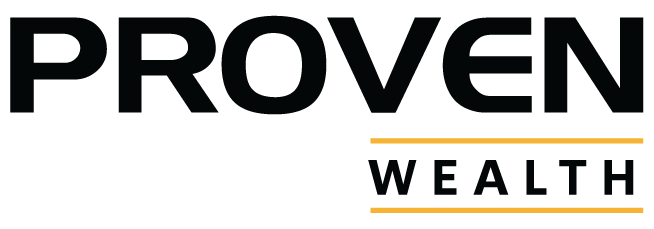- Our Expertise
Wealth Management
Let’s develop a wealth management plan that best suits your goals, risk tolerance, and timeline.
We will partner with you to develop a wealth management plan that best suits your goals, risk tolerance, and timeline.
Whether you want to invest on your own or get expert advice from a trusted partner, we have a range of investment options that will help you meet your financial planning needs.
What is your interest?
Individual
We make it easy for you to build your own portfolio with access to easy-to-use tools, resources, and expert assistance whenever you need it.
Corporate
Access tailored solutions for your business by speaking to one of our Wealth Advisors.
Our Solutions
Our expert team is committed to delivering innovative strategies that help you grow and protect your wealth
Ready to get started?
Schedule a no-obligation consultation with one of our advisors. Find out how financial advice can help you achieve your future goals.
-
Managed Portfolios
PROVEN Plus is our personalized portfolio management service offered to accredited clients. It is a USD denominated discretionally managed portfolio with the primary objective of earning above-average returns through the prudent balance of interest income and capital appreciation.
-
Fixed Income Securities
If your financial goals include capital preservation, income generation, saving for future, or liquidity, then Fixed Income securities are right for you. These securities are designed to preserve capital and are great for saving for a future expense or goal.
-
Unit Trust Funds
The PROVEN Wealth suite of Unit Trust funds are expertly managed portfolios tailor-made to suit the investment goals and risk appetite of our investors. The Unit Trust funds are designed with exceptional care to specifically allow our clients the choice to further diversify their investment portfolios and earn attractive returns on both JMD and USD Investments over the medium to long term.
-
Equities
Equity investments or buying shares in company gives you an ownership interest in that company, which provides capital appreciation through the increase in the share price and income generation through the payment of dividends by the company.
-
Margin Loans
A securities-based line of credit can be a flexible and cost-effective way to access liquidity strategically. Whether it may be to fund a new purchase, renovate your home or take advantage of a timely investment opportunity. Using a line of credit allows you to remain invested and keep your investment portfolio intact.
-
PROVEN Rock
PROVEN Rock Approved Retirement Scheme is a private pension arrangement that creates an opportunity for individuals who are not active members of a Superannuation Fund to formally save for retirement. It allows members to make tax-deductible contributions of up to 20% of their annual income to the scheme. These contributions are invested and accumulate as tax-deferred earnings towards providing a pension at retirement.
Investment Management and Administration
With almost two decades of experience in the Pensions Industry, the expertise provided by our knowledgeable team will help you take control of your financial destiny.
We’re one of the largest Pension Fund management companies in the industry and are ably equipped to meet your retirement planning needs.
PROVEN Investment Managers
-
We have a team of qualified and experienced investment professionals who are dedicated to providing stellar investment returns.
-
We continuously monitor the capital markets to make tactical and strategic portfolio management decisions to drive performance.
-
We provide an investment structure which allows for prudent evaluation and in-depth research into a wide range of investment opportunities.
0
Years of Experience
$ 0 B
Fund Value
0
Total Membership
-
Investment Banking
Our Investment Banking team work will work closely with you to facilitate optimal long-term investment performance, increase profitability, and improve return on shareholder equity.
-
Foreign Exchange Trading
Benefit from our competitive cambio rates, expertly negotiated by our experienced team to maximize your financial returns.
Wealth Insights
Stay informed with expert financial news, market updates, and insights.
Local Inflation & Unemployment. What is the story?
Local Businesses support Lifesaving Pediatric Open Heart Procedures at Bustamante Hospital for Children
U.S ECONOMY BREAKS OUT OF RECESSION, WHERE’S THE OPPORTUNITY?
Wealth FAQs
Discover answers to common questions about our wealth management services. From understanding how we manage your investments to learning more about fees, portfolio strategies, and account access, our FAQs provide clear insights to help you make informed financial decisions.
How do I open an account?
Lorem ipsum dolor sit amet, consectetur adipiscing elit, sed do eiusmod tempor incididunt ut labore et dolore magna aliqua. Ut enim ad minim veniam, quis nostrud exercitation ullamco laboris nisi ut aliquip ex ea commodo consequat. Duis aute irure dolor in reprehenderit in voluptate velit esse cillum dolore eu fugiat nulla pariatur. Excepteur sint occaecat cupidatat non proident, sunt in culpa qui officia deserunt mollit anim id est laborum
How do I open an account?
Lorem ipsum dolor sit amet, consectetur adipiscing elit, sed do eiusmod tempor incididunt ut labore et dolore magna aliqua. Ut enim ad minim veniam, quis nostrud exercitation ullamco laboris nisi ut aliquip ex ea commodo consequat. Duis aute irure dolor in reprehenderit in voluptate velit esse cillum dolore eu fugiat nulla pariatur. Excepteur sint occaecat cupidatat non proident, sunt in culpa qui officia deserunt mollit anim id est laborum
How do I open an account?
Lorem ipsum dolor sit amet, consectetur adipiscing elit, sed do eiusmod tempor incididunt ut labore et dolore magna aliqua. Ut enim ad minim veniam, quis nostrud exercitation ullamco laboris nisi ut aliquip ex ea commodo consequat. Duis aute irure dolor in reprehenderit in voluptate velit esse cillum dolore eu fugiat nulla pariatur. Excepteur sint occaecat cupidatat non proident, sunt in culpa qui officia deserunt mollit anim id est laborum



